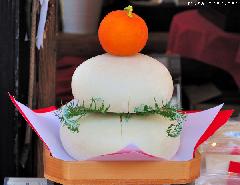If you visit Japanese shrines or temples at the beginning of the year, you will notice places equipped with large boxes where visitors are throwing various objects… If you look closer, you will see them throwing the same objects available for sale at the respective temple or shrine - small silk sachets (omamori), daruma dolls, wooden arrows (hamaya)… Why?
Omamori (from mamori, which means protection) are typical Japanese amulets sold at Shinto shrines and Buddhist temples. There are many types of omamori available, for protection, traffic safety, good luck, to pass exams, for good luck in business, marriage, protection for pregnant women, good health… Generally an omamori is made of a prayer written on a wooden plaque or paper, wrapped in a piece of silk, but there are also other, more sophisticated versions.
Japanese tradition says that the omamori must never be opened, otherwise it will loose its powers. Also, it is said that the omamori must be replaced every year, to get rid of the last year’s bad luck. So around the New year, they are generally returned to the place where they were bought. And since the omamori must be treated with respect, they are never thrown away - they are collected in these special boxes and burned around mid-January, as a sign of respect towards the respective deity.
That’s what I photographed here, at the Meiji Jingu Shrine from Tokyo. The poster in the middle drew my attention: It’s a drawing forbidding the Daruma Dolls, dolls or plush toys… Although Daruma Dolls are burned as well at the beginning of the New Year, they aren’t sold at Shinto shrines, like Meiji Jingu - they are Buddhist lucky charms…
EXIF Info:
|
Yesterday’s Japan Photo:Traditional Japanese New Year Decoration, Kagami mochi |



